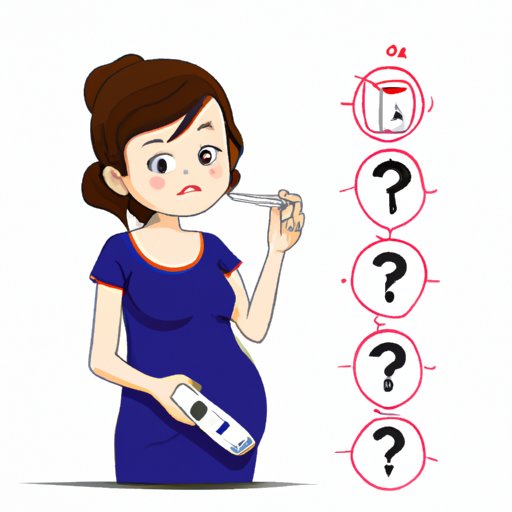Introduction
Getting pregnant can be an exciting yet challenging journey for couples. One of the most important questions on the minds of many women hoping to conceive is: when is the best time of month for me to get pregnant? Knowing the answer to this question can be key to optimizing your chances of conceiving naturally.
The concept of “fertility window” refers to a period of time during a woman’s menstrual cycle when she is most likely to get pregnant. This article will explore the optimal fertility window, techniques for tracking ovulation, and other factors that can affect fertility.

Exploring the Optimal Fertility Window
Understanding the basics of ovulation and the fertile window is key to maximizing your chances of getting pregnant. Ovulation is the process of releasing an egg from the ovary. It typically occurs around mid-cycle, usually 12 to 14 days before the start of a woman’s next period. The fertile window is the five days leading up to and including the day of ovulation. During this time, the egg is viable and can be fertilized if sperm is present.
Timing intercourse during the fertile window can improve your chances of getting pregnant. Intercourse should take place every other day during the fertile window to ensure that sperm is present when the egg is released. Keep in mind that sperm can live inside the female body for up to five days, so it is possible to get pregnant even if intercourse takes place after ovulation.
Tracking ovulation is one of the best ways to determine when your fertile window begins and ends. There are several methods available for tracking ovulation, such as taking your temperature every morning, using ovulation predictor kits, and tracking changes in cervical mucus. Additionally, there are apps and websites available that can help you track your cycle and predict when ovulation is likely to occur.
The Best Time of Month to Conceive
In addition to understanding the concept of fertility window and tracking ovulation, there are other factors that can impact a woman’s ability to get pregnant. Age is one of the most important factors. Women under 35 have the highest chance of conceiving naturally, while women over 40 may have difficulty conceiving due to decreased fertility.
Women who are currently taking any type of medication should speak with their doctor before trying to conceive. Certain medications, such as antibiotics and anti-depressants, can interfere with a woman’s ability to get pregnant. Additionally, lifestyle choices such as smoking, drinking alcohol, and being overweight can all have a negative effect on fertility.
Conclusion
In conclusion, the best time of month for a woman to get pregnant is during her fertile window. This window typically occurs 12 to 14 days before the start of her next period. Tracking ovulation is a key way to identify when this window begins and ends. Additionally, factors such as age and lifestyle choices can play a role in a woman’s fertility. Couples hoping to conceive should speak with their doctor if they have any questions or concerns.
For more information on fertility, ovulation, and conception, visit the American Pregnancy Association website at www.americanpregnancy.org.


